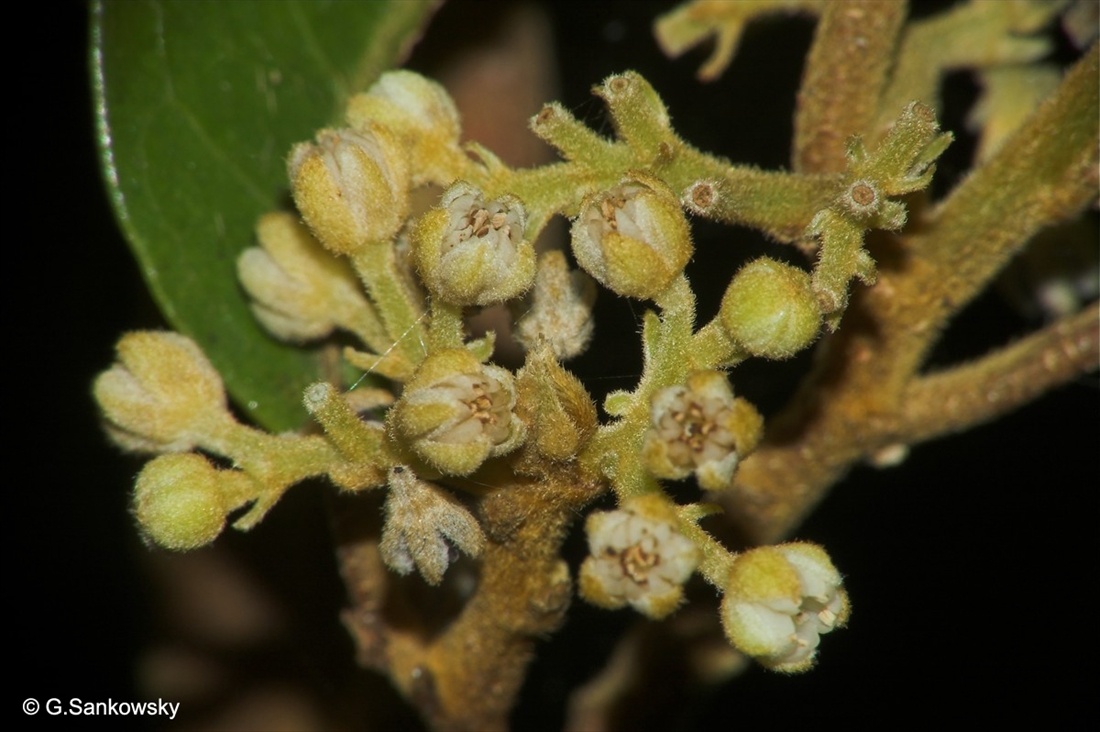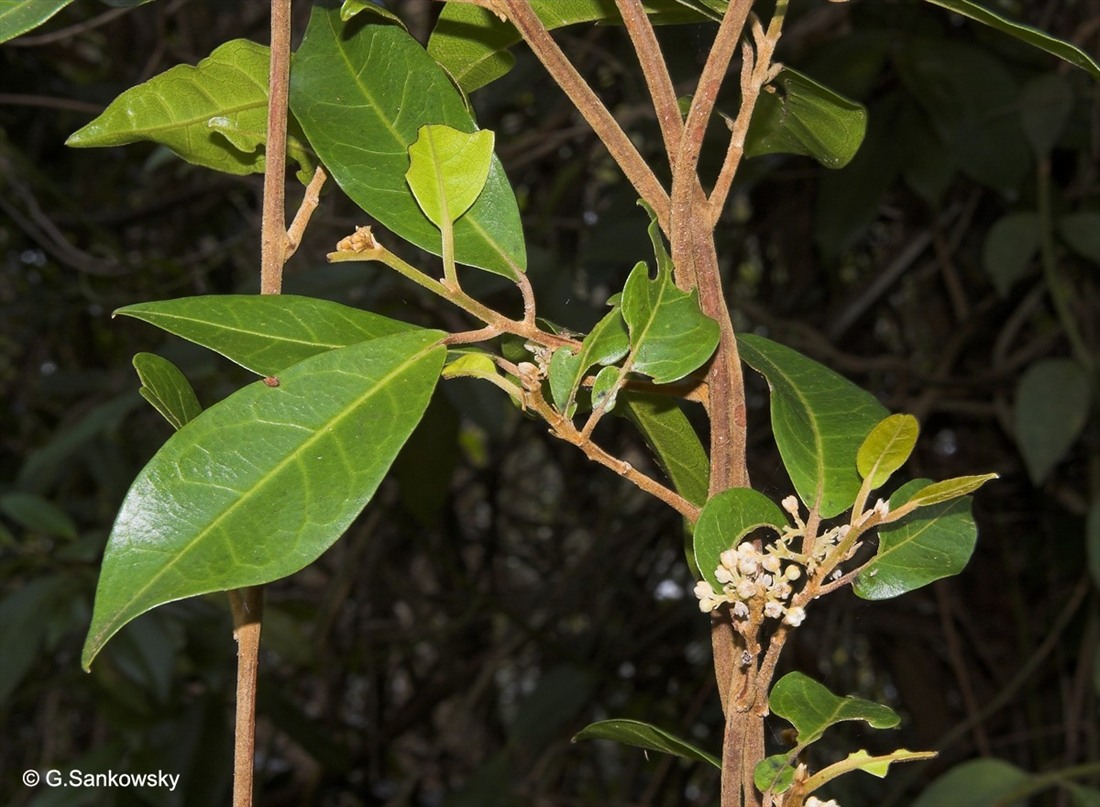Australian Tropical Rainforest Plants - Online edition
Dichapetalum timoriense (DC.) Boerl.







Boerlage, J.G. (1890) Handleiding flora Nederl. Indische 1: 199.
Vine stem diameters to 6 cm recorded. Dead bark layered, showing growth rings in transverse section.
Leaf blades about 8-17 x 3-7 cm, petioles about 0.6-1 cm long. Stipules +/- linear, about 3-5 mm long, clothed in pale prostrate hairs. Lateral veins 5-8 on each side of the midrib forming loops inside the blade margin. Young leafy twigs densely clothed in pale hairs. Backwards pointing branches assist in climbing.
Sepals densely clothed in hairs on the outer surface and similarly clothed on the inner surface at least towards the apex. Sepals about 1.5-2 mm long. Petals glabrous, about 1.5-2 mm long with a fold down the middle. Staminodes sessile, alternating with the stamens. Ovary densely hairy, the hairs extending to the base of the style. Stigma 3-lobed at the apex. Ovules 2 per locule, pendulous from the apex of each locule.
Usually three cataphylls produced before the first true leaves. First true leaves elliptic-obovate, about 4-4.5 x 2 cm, apex acute or acuminate, base cuneate, petioles about 3 mm long. Midrib raised on the upper surface. Stipules filiform, 3 mm long, hairy. At the tenth leaf stage: leaf blade elliptic, apex apiculate, base cuneate, midrib raised on the upper surface. Lateral veins forming loops inside the blade margin. Stipules linear, hairy, about 4-6 mm long. Terminal bud densely clothed in fawn-coloured hairs. Seed germination time 37 days.
Occurs in NT, CYP and NEQ. Altitudinal range from near sea level to 200 m. Grows in lowland rain forest and gallery forest. Also occurs in Malesia.
This species should be treated with caution as some species of Dichapetalum produce fluoroacetate which is very poisonous.





